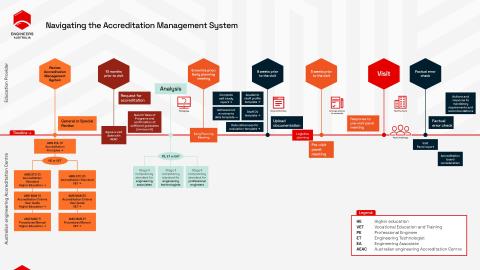Use these documents for Chartered assessment.
Areas of practice

Chemical Engineering
Chemical engineering deals with the application of physical sciences (physics and chemistry) and life sciences (microbiology and biochemistry), together with applied mathematics and economics to produce, transform, transport, and properly use chemicals, materials and energy.

Civil Engineering
Civil engineering deals with the design, construction and maintenance of the physical and naturally built environment. Civil engineers generally specialise in one of a number of sub-disciplines.

Construction
Construction engineering deals with all areas of construction of public, commercial and industrial infrastructure, structures and plant including brownfield and greenfield sites.

Cost Engineering
Cost engineering deals with the analysis of cost and timing outcomes on engineered assets, programs, projects, products and services.

Electrical Engineering
Electrical engineering deals with electricity generation, transmission, distribution, electrical equipment manufacture, instrumentation and control systems.
Use these documents for NER or state registration assessment.
Areas of engineering

Civil Engineering
Civil engineering deals with the design, construction and maintenance of the physical and naturally built environment. Civil engineers generally specialise in one of a number of sub-disciplines.

Electrical Engineering
Electrical engineering deals with electricity generation, transmission, distribution, electrical equipment manufacture, instrumentation and control systems.

Environmental Engineering
Environmental engineering uses the core knowledge of the environment to create innovative solutions for a sustainable future.

Fire Safety Engineering
Fire safety engineering deals with the protection of life, property, and environment through the application of engineering principles, rules and judgement to the phenomenon of fire, its physical effects and the reaction and behaviour of people to fire.

Geotechnical Engineering
Geotechnical engineering deals with the mechanics of soil and rock and its applications to engineering elements.
Competency assessments are used to ensure engineering professionals who want to work within Australia meet the benchmarked qualifications and competency standards to practise.
Engineers Australia uses two sets of competency standards per occupational category. Each one is used for a different purpose.
Entry to practice
Entry to practice assessments (sometimes called stage 1) are used to assess some membership applications and some migrant skills assessment applications.
If you need to complete an entry to practice competency assessment, you’ll be assessed against the entry to practice competencies for your occupational category.
Download the entry to practice competency assessment documents for:
- Professional engineers – includes summary statement: professional engineers
- Engineering technologists – includes summary statement: engineering technologists
- Engineering associates – includes summary statement: engineering associates
- Engineering manager – includes summary statement: engineering manager
Independent practice
If you want to apply for a Chartered or NER credential you’ll be assessed using an independent practice assessment (sometimes called stage 2). You’ll be assessed against the 16 elements of competency that are related to your occupational category. These sit across four core areas:
- Personal commitment.
- Obligation to community.
- Value in workplace.
- Technical proficiency.
Download the independent practice competency assessment documents for:
If you have any questions about competency assessments or applications for migration skills assessment, Chartered or NER please contact us.
Member policies
Professional standards framework
The Engineers Australia Professional Standards Framework is the integrated system of policies, processes and resources that guide and support engineers to practice engineering ethically, competently and responsibly. It applies throughout their careers from pre-qualification through to advanced practice and executive management and leadership and is designed to set, uphold and enhance standards that protect the public and build resilience and trust in the profession.

Royal Charter and By-laws
Engineers Australia has operated under a Royal Charter since 1938. It also operates under a set of by-laws to ensure appropriate regulation and fair processes for governing boards and members alike.

Spokespersons policy
In accordance with Engineers Australia’s mission to be recognised as a trusted source of information representing the profession, our spokespersons are expected to follow protocols to ensure consistency across our public messages and communications to protect our reputation and good standing.
Use the approval process diagram below with the relevant accreditation management system (AMS) documents in the library to have engineering courses accredited. If you have any questions about using the AMS please contact us. Click the image to enlarge, or download a PDF version.
Accreditation management system

AMS-POL-01 Accreditation principles

AMS-POL-02 Accreditation principles - COVID-19

AMS-STD-10 Accreditation standard for higher education

AMS-STD-20 Accreditation standard for VET programs


